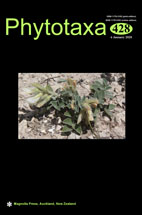Abstract
We present a bryophyte checklist for Madre de Dios Archipelago, located in western Magallanes Region, southern Chile. Madre de Dios is one of the most unique limestone massifs on Earth, and together with Diego de Almagro Island (150 km southward), they are the most extensive of such existing areas in Chile. It is located in the western margins of the southern archipelago region, between Puerto Edén and Puerto Natales. As a result of this first bryophyte collecting effort in calcareous environments in Chile, a total of 152 bryophyte taxa are reported, including two hornworts, 80 liverworts, and 70 moss taxa. From this total, 14 are new records for Magallanes Region and 25 for Última Esperanza Province. Eleven species extend their southern distribution limit, whereas two extend their northern distribution limit. Among the new regional records, we found the rare Vesiculariopsis spirifolium (Dusén) Broth., for which only three previous collections were known, obtaining additional ecological data. Additionally, the only southern South American representative of the tropical family Pleuroziaceae, Pleurozia paradoxa (J.B.Jack) Schiffn. was abundantly found among sandstone tundra. Both sandstone and limestone environments were prospected, the latter alone being inhabited by 100 bryophyte taxa. A liverwort-moss proportion pattern related to a calcareous substrata exposure gradient is discussed, and the most frequent species of the different environments of the islands are characterized. For most bryophytes reported here, these new records fill an important distribution gap in a scarcely explored area.

